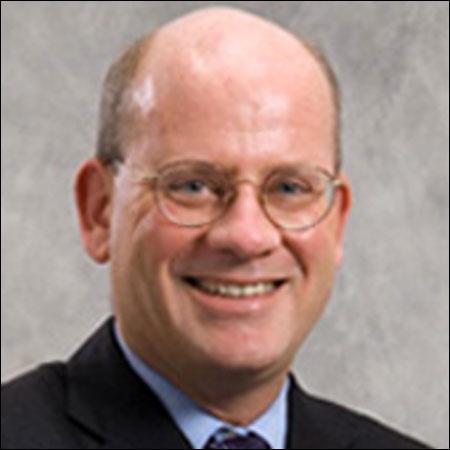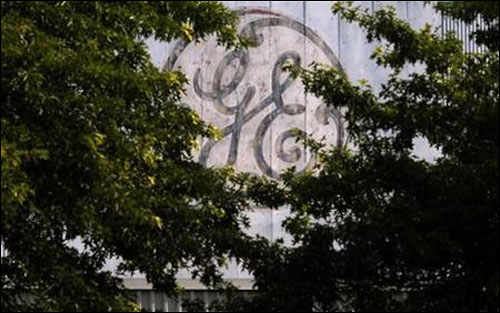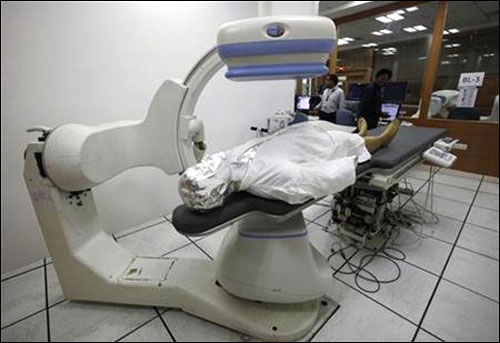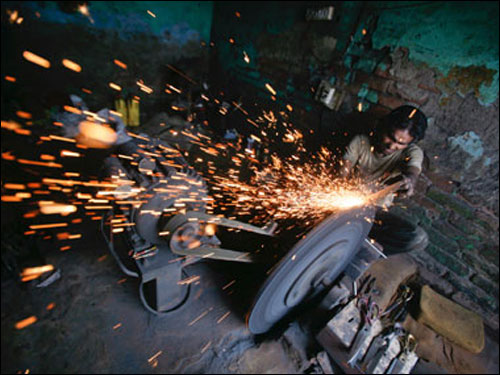
'Have faith in India' is the pitch GE India President & Chief Executive John L Flannery plans to make at the Global Leadership Meeting of top 500 GE executives at Boca, Florida, in the first week of January. He tells Sudipto Dey that 2012 has been the most difficult year since his appointment as India head in 2009. He also explains why his faith in the country still remain intact. Excerpts:
The period since you took charge of India operations coincides with your company's re-structuring and localisation of India operations. How different is GE India in 2012 from 2009?
Very different, though we changed the structure more than the strategy. We always wanted to be a big infra player in India - in sectors such as energy, healthcare, education, locomotives, etc. In 2009, we had a big technology presence in Bangalore in the form of a global research platform.
We were in the process of winding down our Genpact legacy. The commercial part was essentially the sales arm of global businesses. We were importing products from the US and there were sales teams on the ground here. We were more of a back-office capability in BPO, technology and sales offices.
But we were not growing; in fact, shrinking a little. Then, we changed the structure to P&L, and the management wanted to experiment and see if a management team on ground would find more traction.
Given GE's pedigree, why do you think that happened?
It was a focus issue. India at that time would have been 1-2 per cent of global P&L (of each vertical). The shares of the US, Europe and China were much bigger. When we put in place a (country-specific) P&L structure, India suddenly became a very important geography. We have done better in three years after the change than three years before it.
The average orders are 50 per cent higher. As part of organisation change, the single largest thing we want to do is localising the company. In all our businesses, we are out to build local capability in four basic aspects - product line, manufacturing and supply chain, the service team and the financing and investment capability.
Click on NEXT for more...

How do you look at 2013 from a top-line and bottom-line perspective?
We have good visibility of next year's revenues. Our business model is: Order this year, revenue the next. We expect strong double-digit growth at the top line and even stronger at bottom line. Our profitability growth should be at double the revenue growth rate.
How close are you to the targets set when you took charge in India?
Financially, we are very close, except perhaps the gas turbine business in 2012. The rest have grown sharply in last three years - some better than expected. We are financially in good shape. The capability of the company locally is ahead of expectation.
In India, 2012 has been the most challenging but also the most satisfying year for me. It has been challenging on the government front, very challenging for gas turbine industry, the rupee depreciated a lot that affected our imports.
Click on NEXT for more...

How successful has been the localisation drive in India?
With the change from a sales outpost to a fully-fledged business, now focus and intensity matters a lot. You start to seep in every aspect of the business, starting with the customer, whom you used to meet only twice a year, but see almost every day now.
Understanding the customer, feeling what they are feeling, seeing what competitors are doing, you end up having a richer sense of the marketplace.
For instance, if you look at the health care business, we are designing lot of products specifically for India. This includes their price points, user interface, ability to operate in an environment of Tier-II and -III hospitals with irregular power supply. In the health care and energy business, we have made a lot of progress in localising the products.
The wind turbine business was essentially non-existent three years ago. Now, we have a manufacturing ecosystem, 85 per cent of which is totally localised. That business has generated hundreds of million dollars of orders non-existent three years ago.
We have announced a multi-model One GE facility at Pune, set to get operational by 2013-end, with an investment of $200 over several years. While we use the facility for India business, we would also use it to export products and components.
We are looking at wind energy related products, valves, control systems, and some aircraft engine component part that we would export for global assembly. We would like to make locomotive engines there. Over five years, the facility should support 2,000 people.
Click on NEXT for more...

How would the manufacturing facility impact sourcing for India and the global businesses?
The fully-loaded cost of this factory in terms of per hour of operations would be competitive with any factory we have anywhere in the world, for instance, China or Vietnam. So, the Indian manufacturing story is far more robust than what many believe.
The manufacturing supply chain around the Pune facility is sourcing products like blades not only for India business but also helping them qualify as global suppliers. Interestingly, we have reduced the number of suppliers from 450 to 300, but tripled the amount of purchasing.
We are raising the bar in terms of expectations from them and the financial stability and quality systems they need to have. So, it is a big investment of our time and money in building the supply chain.
What has been the impact of the localisation drive on head count in India?
Over the last three years, we have doubled our sales team (around 2,000 now). So, we have more tier-II and -III distribution across all businesses, and more service and support people.
Three years ago, 40 per cent of people servicing the energy business were from India, the rest flew in from the US and Europe. Now around 80-85 per cent is local. The commercial side of business has seen massive increase in headcount in the last three years.
Click on NEXT for more...

You have started taking an equity position in many customer businesses?
Investment is the fourth pillar of our localisation drive. So, we have invested in many of our customers in the health care business by lending or leasing money for equipment purchases, or investing in some customers to help them grow business.
There is an explosion of companies getting into cardiac, oncology, dental and ophthalmology services. Most of these service providers are small and medium sized companies, and need equity help to expand and buy equipment. We have done half-a-dozen equity deals in the last couple of years.
A typical deal size would be anywhere between $10 and 50 million, and in the aggregate we spent around $150-200 million. Now, we have a lot more focus on the customer with a local mindset.
How has contribution of the various verticals to the top line changed between 2009 and now?
We don't give out actual numbers, but as I said earlier, the order level is 50 per cent higher than the pre-2009 level. Most notable part about that is our largest business was selling gas turbine for 2010 and 2011 till the last 18 months when the industry hit a wall due to the lack of natural gas in the country.
So, in a pie chart for top line contribution in 2012 versus 2009, the share of health care and aviation would be up, energy slightly up (with renewable side of the business doing better than gas turbine business), oil & gas is small but growing, while the financial services side is down.
We see some good opportunity in oil and gas going forward, as GE has made some acquisitions in that space globally.